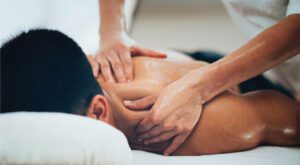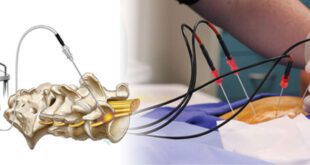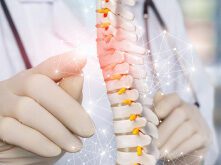 Athlete care and today’s Sports Medicine staff have evolved and are much different in their look and approach when compared to the old school traditional sports medicine staffs consisting of just the athletic trainer and the strength coach. We no longer call it the sports medicine; it is now the High-Performance Staff. The High-Performance staff takes a team approach and consists of the Team Doctor, Athletic Trainer, Strength & Conditioning Coach, Physical Therapist, Mental Conditioning Coach, Sport Scientist, Bio Mechanist, and Massage Therapist or Manual Therapist. “Matthew C. Krause, RSCC*E, ATC, Pro Strength Coach Emeritus says the Massage Therapist is the new Super Utility staff member on the high-performance team. They work with players pre- and post-game. They help with in training room with rehabs, they are in the weight room working on players pre-lift.” For industries shifting to the High-Performance Team, having a Massage therapist on staff is a must.
Athlete care and today’s Sports Medicine staff have evolved and are much different in their look and approach when compared to the old school traditional sports medicine staffs consisting of just the athletic trainer and the strength coach. We no longer call it the sports medicine; it is now the High-Performance Staff. The High-Performance staff takes a team approach and consists of the Team Doctor, Athletic Trainer, Strength & Conditioning Coach, Physical Therapist, Mental Conditioning Coach, Sport Scientist, Bio Mechanist, and Massage Therapist or Manual Therapist. “Matthew C. Krause, RSCC*E, ATC, Pro Strength Coach Emeritus says the Massage Therapist is the new Super Utility staff member on the high-performance team. They work with players pre- and post-game. They help with in training room with rehabs, they are in the weight room working on players pre-lift.” For industries shifting to the High-Performance Team, having a Massage therapist on staff is a must.
The days of just getting your athletes Bigger, Faster, and Stronger are gone. Movement quality has become just as important as strength for the new-age athlete. Mobility and flexibility of our major joints (shoulders, hips, lower back and ankle) is the most important part of the current athlete’s assessment when it comes to injury prevention and performance. The High-Performance team develops individualized programs for the athletes with the Massage therapist playing an especially important role in the day-to-day regimens for pre–game activation and post-game recovery. This is not a relaxing massage from the spa. Sports massage therapists are manually mobilizing adhesions in the muscles and soft tissue while trying to stimulate tissue repair. Sometimes there is a slight discomfort to his protocol. If the adhesions are not mobilized, there can be loss of range of motion to the joint and your performance will be compromised.
The Massage therapist is now in all aspects of the players’ programs. They are in the training room helping the players prepare for the day, assisting with rehabs, and in the weight room working on players before the lift (i.e. Activation, Recovery, Restoration, and Building). Having your range of motion at optimal levels before you perform will only increase your in-game performance.
We know that the harder our athletes play, practice and train, the more that their muscles, tendons, fascia- all their soft tissue- shorten, affecting the joints that they support. Proper joint function is important to movement quality. High skill-orientated sports like golf, tennis, and baseball rely on repetitive quality movement patterns to compete at any level. Power sports like football, basketball, and hockey need quality movement patterns to become explosive before they jump or make contact. It is important to get your soft tissue restored back to its optimal length before your next game or practice. If NOT, you will see a decrease in your power, performance, and increase your potential of injury.
Increasingly, the use of high-quality professional grade CBD topicals are being integrated with sports / therapeutic massage and soft tissue manipulation protocols for improving Activation, Recovery, and Restoration/Rehabilitation. These, when combined with mobilization, flexibility, and strengthening exercises, improve performance and reduce the risk of injury. Soft Tissue Massage and Manual Manipulation (STM) work to restore our soft tissue, breaking down adhesions by shearing and separating the tissues from one another. Some of these techniques include deep tissue sports / therapeutic massage, Instrument Assisted Soft Tissue Manipulation (IASTM), Cupping, Active Release Technique (ART), Tempering, and others. This process induces cellular trauma and inflammation to stimulate recovery.
Our body has an internal mechanism for maintaining homeostasis (balance) called the Endo-Cannabinoid System (ECS). One of the purposes of this system is to recognize when something is out of balance and signal the body for restoration and healing. This system manages inflammation with respect to cellular trauma (induced by the STM treatment protocol) to enable the deployment of the white blood cells and collagen to the affected area for recovery, restoration/restructuring, and healing. While our body naturally produces its own cannabinoids, there are a number of factors that influence the ECS and body recovery time. External phyto-cannabinoids such as those derived from the industrial hemp plant supplement our ECS system and improve/accelerate the body’s ability to return to homeostasis – reducing downtime and improving performance. Documentation of hemp derived benefits go back as far as 2737 BC China, in the U.S. Pharmacopoeia until 1947, with significant on-going research investment since its national legalization in 2018.
Most massage therapists will not be treating the professional athlete, but rather the “weekend warrior”, fitness enthusiast, marathon runner, tri-athlete, cross fit enthusiast, body builder, or any number of amateur athletes. These athletes can also benefit from the Massage and Manual Manipulation protocols described above. All these protocols utilize a topical lubricant such as a cream, salve, emollient, lotion or oil to provide the “glide / slide” needed for an effective treatment. Simply substituting a professional grade CBD topical specifically formulated to deliver the glide/slide, concentration of the appropriate cannabinoid profile, and penetration to the CB receptors in the area being treated complements the treatment, providing the benefits described to the athlete.
The addition of a broad-spectrum CBD topical (note: THC free recommended for athletes) as a complement to the standard protocols enhances our ECS systems’ response to the therapy. For therapists treating a client on an ongoing basis, a recommendation of follow-up care by the client can enhance the effectiveness of the treatment being provided. The client can treat the affected area(s) with a twice daily application of a topical salve or lotion between sessions. The client’s interim self-care will keep the therapist’s treatment top of the client’s mind while at the same time providing retail opportunities for the massage practice.
Some CBD companies are focusing only on professional grade topical formulations with products and protocols specifically aligned to the treatments described in this article. Some important criteria for selecting a professional quality product include:
• concentration of CBD in the product (mg./oz.)
• product value – $/mg.
• type of extract (isolate, broad or full spectrum),
• plant pedigree/genetics,
• planting (seeds vs clones). Clones ensure product consistency and the high concentrations provided by unfertilized female plants,
• use of natural organic cultivation and ingredients,
• extraction methodology (supercritical CO2, CO2 or ethanol) ,
• Quality Systems Certification (i.e. FDA GMP),
• transparency and types of substance testing from the field to the body.
We recommend topicals for these treatment protocols that range from 20 – 50 per application of broad-spectrum THC-free hemp derived CBD extract. Full spectrum CBD products can be used; however, the majority of athletes in organized sports prefer to avoid exposure to THC. For a full body massage, look for a massage oil or cream with a 20-50 mg/oz concentration since a one ounce application is the standard amount used. For spot treatments, a product concentration of 250-1000 mg/oz. will generally provide the desired 20-50 mg application.
In the massage therapist’s role as an athlete’s health partner and consultant, there is the opportunity for the therapist to recommend a healthy exercise regimen that will continue the healing process described improving flexibility, mobility, and strengthening to reduce injuries in the future. These regimens typically consist of a 4-step Pre-Event Activation Protocol using a CBD topical containing Capsaicin and MSM:
1. Pre-event or workout warm-up (low impact exercises that increase heart rate,
increase body temperature, preparing the mind and body for more intense effort);
2. Add rotations of the major joints (ankles, knees, hips, shoulders, Elbows, wrist, and neck);
3. Static stretching to the joints and areas that feel tight or showing some resistance (1-3 static stretches and massage to loosen the area); and
4. Dynamic mobility exercises to test the joints to make sure they are free and easy – ready to go.
Finally, recommend that your clients use a Post-Work Out application of a CBD salve to the areas of tightness or soreness to improve recovery, restoration, and avoid injury.
In summary, the massage therapist is becoming a more integral part of the athlete’s high performance plan incorporating daily pre- and post- workout or competitive event protocols for increasing performance, accelerating recovery/rehabilitation, as part of their performance building and proactive injury avoidance. The incorporation of professional grade CBD topicals formulated for these treatments / protocols can improve and accelerate results. For fitness enthusiasts, implementing a visit to the massage therapist and following a regimen such as that described as part of a complete fitness and wellness routine is just as important. The last thing athletes, whether professional or otherwise, need is to experience a skeletomuscular injury that will set them back either on the job or with their fitness program.
So add the new secret weapon to your sports training program- the massage therapist… and topical CBD!
 Central Florida Health and Wellness Magazine Health and Wellness Articles of the Villages
Central Florida Health and Wellness Magazine Health and Wellness Articles of the Villages


